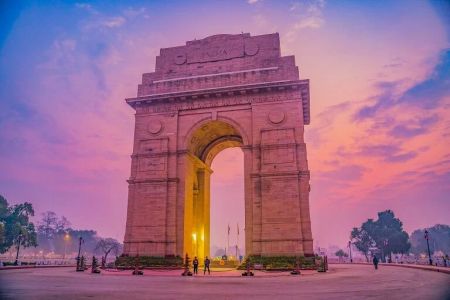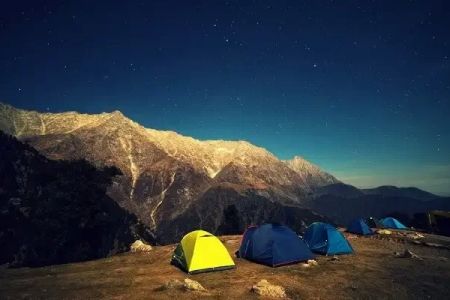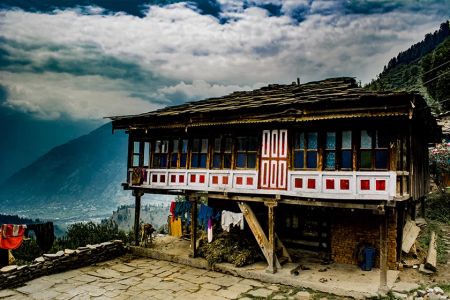Travel Tips for Visiting the Himalayas in India
Introduction to the Himalayas
The Himalayas, stretching across five countries and forming a formidable part of India’s northern border, are a destination like no other. Known for their majestic peaks, breathtaking landscapes, and profound spiritual significance, the Himalayas attract adventurers, nature lovers, and spiritual seekers from around the world. In India, these mountains offer both serene beauty and thrilling challenges, making them a must-visit location for any avid traveler.
When you think of India, you might picture the vibrant cities, bustling markets, or serene beaches. However, the Himalayas offer a completely different side of the country – one of tranquility, awe, and rugged adventure. Whether you want to trek along winding mountain trails, meditate in ancient monasteries, or simply take in the stunning views, the Himalayas promise to leave an indelible mark on your soul.
Best Time to Visit the Himalayas
The best time to visit the Himalayas depends largely on the type of experience you are looking for. For most travelers, the peak tourist season in the Himalayas occurs between March and June, when the weather is pleasant, and the days are sunny and warm, with clear skies perfect for trekking and sightseeing. This is an ideal time for trekking in popular regions like Himachal Pradesh, Uttarakhand, and Sikkim.
For those looking for a quieter experience and fewer tourists, the months of September to November are also excellent, as the monsoon season has just ended, and the mountains are lush and green. If you are an adventure enthusiast who enjoys snow sports or winter trekking, then visiting during the winter months of December to February will allow you to experience the Himalayan region covered in snow, offering a unique and magical landscape.
It’s important to note that weather conditions can change rapidly in the Himalayas, so be prepared for varying temperatures and unpredictable weather, especially in the higher altitudes.
Essential Packing Tips
Packing for a trip to the Himalayas requires careful planning. The region's weather can vary significantly, and it is essential to be prepared for both cold and warm conditions. Here’s a list of essential items you should pack:
- Layered Clothing: Pack breathable, moisture-wicking clothing that you can layer. Temperatures in the Himalayas can range from warm in the valleys to freezing in the higher altitudes, so layering is key.
- Comfortable Footwear: High-quality, comfortable hiking boots with good ankle support are essential for trekking. Make sure they are waterproof and well-worn-in before the trip.
- Sunscreen and Sunglasses: The sun can be intense, even in colder regions, so don’t forget to bring sunscreen, lip balm, and sunglasses to protect against UV rays.
- Waterproof Gear: Rain gear is a must-have during the monsoon season. Be sure to bring a waterproof jacket, pants, and a rain cover for your backpack.
- First Aid Kit: A well-stocked first aid kit with essential items such as pain relievers, bandages, antiseptics, and any necessary prescription medications is crucial for remote areas.
By packing appropriately, you can ensure that you are well-prepared for any challenges that may arise while exploring the Himalayas.
Health and Safety Considerations
When traveling to the Himalayas, health and safety should be a top priority, especially for those venturing into high-altitude regions. Altitude sickness can affect anyone, even those in peak physical condition, so it’s important to acclimatize properly. Here are some key health and safety tips:
- Take it Slow: Don’t rush your trek. Give your body time to acclimatize to the increasing altitude to avoid altitude sickness. Spend a few days at intermediate altitudes before heading higher.
- Stay Hydrated: Proper hydration is crucial in high altitudes. Drink plenty of water to prevent dehydration and help your body cope with the conditions.
- Know the Symptoms of Altitude Sickness: Symptoms include headaches, nausea, dizziness, and shortness of breath. If you experience any of these, it’s essential to stop ascending and descend to a lower altitude.
- Local Medical Facilities: Know the location of nearby medical facilities in case of emergencies. Many trekking routes are remote, so access to professional medical care can be limited.
By following these precautions, you can ensure a safe and enjoyable trip to the Himalayas, minimizing health risks and maximizing your experience.
Top Destinations in the Himalayas
The Himalayas are home to a wide variety of destinations that cater to all types of travelers. Whether you are interested in trekking, spirituality, or simply enjoying the beauty of the mountains, these destinations offer something for everyone:
- Leh-Ladakh: Known for its stark, beautiful landscapes, Leh-Ladakh is perfect for adventure seekers and those interested in Tibetan culture. It offers great trekking routes and monasteries that make it a popular destination for tourists.
- Shimla and Manali: Located in Himachal Pradesh, Shimla and Manali are popular hill stations offering scenic views, adventure sports, and cultural experiences. These towns are perfect for a leisurely vacation with family or friends.
- Rishikesh and Haridwar: If you’re seeking a spiritual journey, Rishikesh and Haridwar in Uttarakhand are renowned for their yoga ashrams, sacred riverfronts, and temples.
- Darjeeling: Famous for its tea plantations and panoramic views of Mount Kanchenjunga, Darjeeling in West Bengal is a charming hill station with a colonial touch.
These destinations provide not only natural beauty but also opportunities for adventure, spirituality, and cultural immersion, making the Himalayas one of the most diverse and captivating regions to explore in India.
Cultural Insights and Local Etiquette
Understanding local customs and etiquette is crucial when traveling to the Himalayas. Respect for local traditions and cultures will help you connect with the people and enhance your experience:
- Respect for Spiritual Sites: The Himalayas are home to many sacred temples and monasteries. When visiting these sites, dress modestly, speak quietly, and follow the local guidelines.
- Politeness and Greeting: The traditional greeting in many Himalayan regions is “Namaste” or “Namaskar.” A simple nod or handshake is also common in more urbanized areas.
- Contribute to Conservation: The Himalayas are a fragile environment. Avoid littering and be mindful of your environmental impact. Stick to designated trails and be respectful of wildlife.
By embracing local customs and being respectful, you will not only gain a deeper understanding of the culture but also contribute to preserving the integrity of this majestic region.
Ready to explore the Himalayas? Start planning your adventure today with Travel India One for tips, guides, and booking information to make your journey unforgettable!










